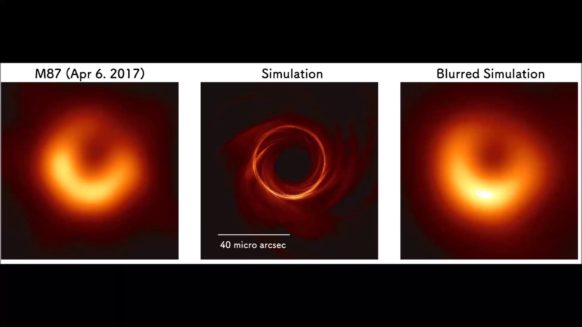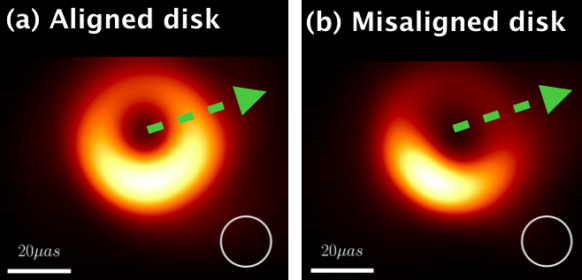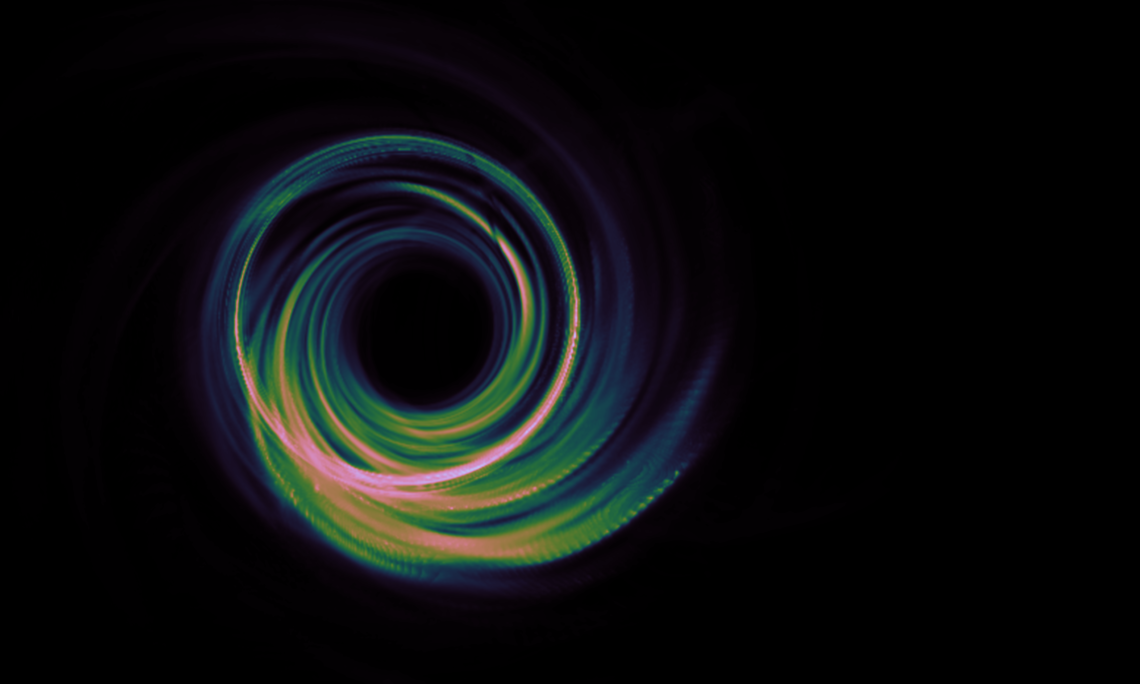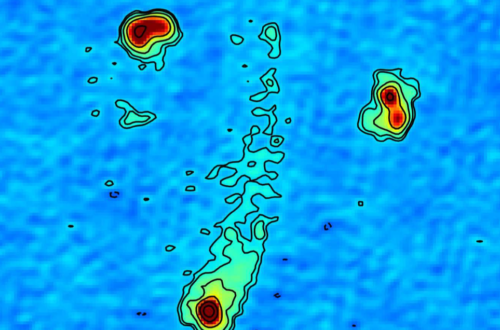Twisted jets? Warped disks? It’s all possible in black holes! Hi all! Today I will talk a bit about our recent paper on the different types of disks you can have around black holes. As perhaps you would know, in 2019, the Event Horizon Telescope collaboration (EHTC) released the first-ever photos of the inner regions of the galaxy M87 (see link here). The EHTC studied an extensive suite of theoretical models of accreting black holes and tried to see which models looked similar to the observed images. These models simulate how the gas accretes onto a spinning or non-spinning black hole and then calculates how photons of light produced by the gas travel back to us, the observer. This way, we begin to interpret and understand what goes on in the very centres of galaxies.

In our paper, Chatterjee et al. 2020, now published in the Monthly Notices of the Royal Astronomical Society, we studied a different set of theoretical models. These are models where the accretion disk and the jet are warped and bent around the black hole (see here for a blog on tilted disks and jets by our own Casper Hesp, a former Masters student with Sera). In these models, the disk starts misaligned with the black hole spin and develops a warp as it tries to realign itself with the black hole because gravity rules all. The jet usually follows the disk orientation and similarly bends. Misaligned jets have a vividly different structure from black hole-aligned jets and pose all sorts of interesting questions, such as how much variable the image we see is!!
Once you have a “bent” disk and jet, you can then calculate what it would look like in the sky using telescopes. And it makes for great movies! At first, let’s familiarise ourselves with how “aligned” black holes look. Usually, the most prominent “directional” feature is the jet, which also provides us with an idea of the source’s inclination. In the movie below, we have a jet aligned with the black hole’s spin direction and is pointing vertically up.
In the next movie, let’s tilt the black hole by some amount. Now here, the jet still points vertically up, and the disk at large scales is edge-on to us. Notice that the movie looks radically different from the aligned simulation. We see the base of the jet more prominently this time because the jet twists towards us.
So, the next question for us would be: is there a warped disk-jet system in M87?? Here, we can use our knowledge of the direction of the jet in the radio waveband. Let’s re-position the jet and observe again!

Given our ignorance of electron physics around black holes, the images can look really different, but also, unfortunately, often very similar. In astrophysics, one of the major problems is a problem usually has several solutions, and the tricky thing is to find a “smoking gun” to break the degeneracy. Constraining the theoretical possibilities requires making innovative use of observations at multiple wavelengths over multiple epochs of time. Only time and more observations from the EHT will be able to finally tell us whether M87 does indeed have a misaligned system. There is some evidence that the galactic disk does indeed carry a different inclination to the jet, but a lot more work is definitely needed!
Model degeneracies crop up everywhere, but hey, that’s just another day in the life of an astrophysicist!!




